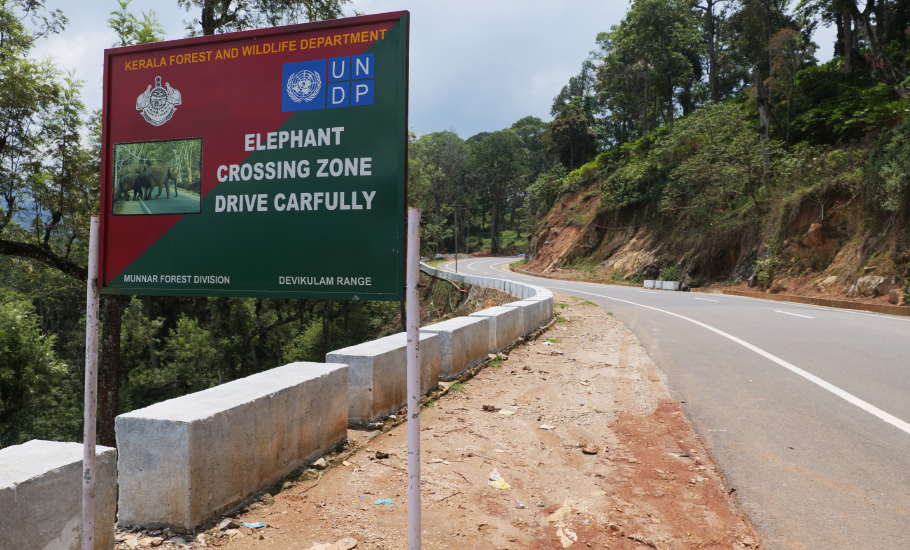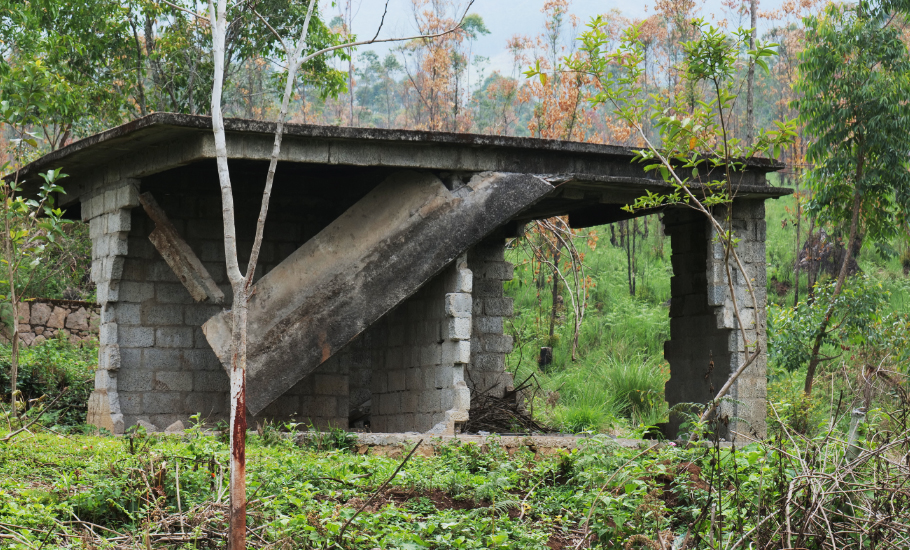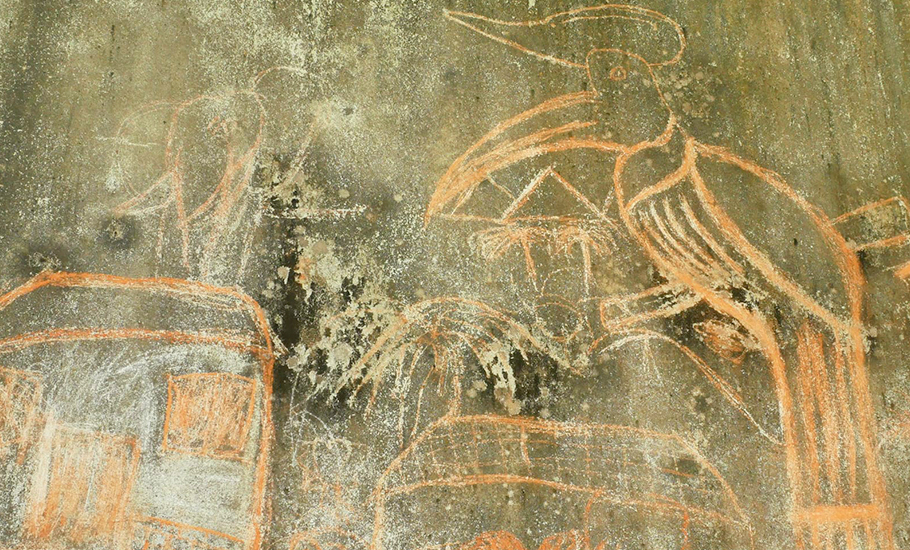
- Home
- India
- World
- Premium
- THE FEDERAL SPECIAL
- Analysis
- States
- Perspective
- Videos
- Sports
- Education
- Entertainment
- Elections
- Features
- Health
- Business
- Series
- In memoriam: Sheikh Mujibur Rahman
- Bishnoi's Men
- NEET TANGLE
- Economy Series
- Earth Day
- Kashmir’s Frozen Turbulence
- India@75
- The legend of Ramjanmabhoomi
- Liberalisation@30
- How to tame a dragon
- Celebrating biodiversity
- Farm Matters
- 50 days of solitude
- Bringing Migrants Home
- Budget 2020
- Jharkhand Votes
- The Federal Investigates
- The Federal Impact
- Vanishing Sand
- Gandhi @ 150
- Andhra Today
- Field report
- Operation Gulmarg
- Pandemic @1 Mn in India
- The Federal Year-End
- The Zero Year
- Science
- Brand studio
- Newsletter
- Elections 2024
- Events
- Home
- IndiaIndia
- World
- Analysis
- StatesStates
- PerspectivePerspective
- VideosVideos
- Sports
- Education
- Entertainment
- ElectionsElections
- Features
- Health
- BusinessBusiness
- Premium
- Loading...
Premium - Events

Man versus wild: Why Kerala can’t decide what to do with an elephant raiding shops and homes for rice

On April 5, the Kerala High Court issued an unusual order, to relocate a wild tusker from one place to another, on a petition filed by a couple of animal rights activist group. Arikkomban, the rice loving pachyderm who had a habit of raiding ration shops and houses in search of rice, was wreaking havoc in the high range area of Santhanpara-Chinnakkanal panchayats in Idukki district for...
On April 5, the Kerala High Court issued an unusual order, to relocate a wild tusker from one place to another, on a petition filed by a couple of animal rights activist group. Arikkomban, the rice loving pachyderm who had a habit of raiding ration shops and houses in search of rice, was wreaking havoc in the high range area of Santhanpara-Chinnakkanal panchayats in Idukki district for long. Owing to the pressure of a string of protests by the local people, the government was forced to prepare for the capture of the animal.
This got stalled as the Kerala High Court stayed the government’s decision on March 23 in a late-night sitting considering the plea by People for Animals (PFA), Trivandrum Chapter and the Walking Eye Foundation for Animal Advocacy. On March 29, the court constituted an expert committee to determine whether the elephant should be captured and trained as a Kumki elephant or relocated to another forest. It was after the committee’s suggestion, the court ruled that the jumbo be translocated to Parambikulam Tiger Reserve.

“When we approached the court, we only had one objective: to prevent this tusker, Arikkomban, from suffering the same fate as PM 2 and PT 7, the two elephants that were captured form Wayanad and Palakkad last month. They were captured and turned into slaves as Kumkis. Was this what the local people wanted, to capture him, transport him to an alien habitat, and feed him food that is not his and that will slowly kill him?” asks Sreedevi S Kartha, a trustee of the People for Animals.
“People were cheering and applauding when PT 7 was captured and taken to the kraal. This shows the vulgarity of our society. This has become more of an ego issue than an eco-issue. Arikkomban has been there for the last 38 years, but this sudden demand for his capture was triggered by the capture of PT 7,” adds Sreedevi in a video posted on the internet.
“Anayirankal — which is currently in the news due to the antics of Arikkomban — was an elephant habitat before the resettlements in the region that led to man-animal conflicts,” submitted the expert committee in the court.
Even though it was an elephant habitat, some members of the tribal Muthuvan community have been peacefully co-existing with the wild animals there for years, observed the experts inferring that subsequent ‘unscientific’ resettlement in the area gave rise to human-animal conflict. Over a period of time these conflicts spread to other locations, including 301 Colony, Tank Kudi, Chempakathozhukudi, Kozhipannakudi, Singukandam, BL Ram, Suryanelli, Panthadikalam, Chinnakanal, 80 Acre Colony, Vilakku, Nagamala, Thondimala, Poopara, etc.

A day after the court order, to translocate the elephant, a herd led by the same tusker Arikkompan attacked a house at Idikkuzhi at 301 Colony, near Chinnakkanal. According to the locals the herd also included a cow elephant, two calves, and another tusker. Around 10 am, the elephants attacked the house of VA George leaving the kitchen totally ruined. There was no casualty as the family members were not home. As per the local level people’s representatives, this was the 52nd house raid by Arikkomban in this season alone.
In the Chinnakanal and Anayirankal areas, human-jumbo conflicts have been a major problem for years. In the Munnar Wildlife Division alone, approximately 40 people have perished in wild elephant assaults since 2010. This Arikkomban has a long rapsheet including seven murders. It is not just the Arikkomban, there are other tuskers also that pose a threat to the lives and belongings of the villagers. Chakkakkomban, who loves jack fruits, and Murivaalan aka Mottavalan, who flaunts a hairless tail, make joint destruction force.
The name ‘301 colony’, which is a settlement for tribal families as part of a rehabilitation project, comes from a government programme that established it in 2001-2002 on the banks of the Anayirangal dam reservoir. The land was allocated to 301 tribal families after a long struggle by the Adivasi gotra mahasabha. The environmental activists say that these tribal re settlements including 301 – colony has virtually cut off the elephant corridor. This is why tuskers like Arikkomban and Chakkakkomban are wandering in the town. Local people too agree with this to a certain extent.

“The land allocated to these individuals by the Antony ministry in 2002 was actually a pine plantation. Unfortunately, four of the residents were killed by wild elephants, and there were no drinking water facilities available. As a result, many of them were unable to survive and had to leave. Those who remain live in constant fear of the elephants and have even constructed shacks on the roofs of the concrete houses provided by the government to protect themselves from these animals’, says N M Sreekumar, the member of Chinnakkanal Panchayat.
According to a report by the Wildlife Trust of India (WTI) and the Asian Nature Conservation Foundation (ANCF), titled Right of Passage: Elephant Corridors of India (published in 2005 and updated till 2017) a minimum of 101 elephant corridors were identified as currently in use in India, and seven corridors that were previously identified were found to have been impaired in the last decade. Of the corridors currently in use, 28 are in Southern India, 25 in Central India, 23 in North-eastern India, 14 in Northern West Bengal and 11 in North-western India. An estimated 69.3% of these corridors are being regularly used by elephants, either around the year or in a particular season, and 24.7% are being used occasionally. Some 57.5% of the corridors are of high priority ecologically, and 41.5% are of medium priority, indicating that most of the corridors are important for elephant movement and to maintain a healthy population.

To ensure that corridors are protected and secured, it is important that they are legally protected to prevent further fragmentation of habitat and increased human-elephant conflict. To achieve this, state governments should first demarcate and notify these corridors as State Elephant Corridors, which could then be legally protected under appropriate sections of the Wild Life (Protection) Act, 1972, the Environment Protection Act, and other laws. Wildlife Trust of India also recommends that wherever possible, the state forest department, Project Elephant and conservation organisations should make efforts to protect and secure corridor lands through purchase and voluntary relocation of inhabitants. Corridors could also be secured by working with the local communities and governments (Autonomous District Councils) to reduce local dependency on corridor land, and getting the corridors notified as Village Reserve Forests by the Council or Community Reserves by the state forest department.
There are stark differences between elephant conservationists and other ecological activists and researchers in this regard. For instance, Professor Madhav Gadgil, believes that elephants could be hunted down if they exceed the carrying capacity of our sanctuaries.

“There is no animal which should be unviolated, be it elephant or tiger. Actually, biological diversity is greatly damaged by other means like unregulated pesticide use, not by hunting of birds and animals. Our rivers are full of lethal chemicals like mercury and cadmium. You are ignoring these and thinking of only elephants and tigers and hunting with guns,” Gadgil said in an interview with The Federal in January 2023.
Before heading out to Santhanpara Chinnakkanal area this reporter had met a group of tribal students in Kochi. They were here to participate in an art show, ‘Sea-a boiling vessel’, presented by Cochin-based art collective Aazhi Archives, where they had been given an opportunity to express themselves.
The students have been painting pictures on a wall dedicated to them, of which a particular drawing by Manikantan, a 10-year-old from the Paloor hamlet of Attappady stood out. His drawing has a looming image of an elephant over his house. The way he sees the elephant is so different as if the pachyderm was coming from behind. For tribal children like Manikantan, elephants have been a part of their everyday life, of late a terrifying part.
“All my students are from the tribal communities, and they see the elephant differently from the other students, observes Priya KG, the art teacher of Model Residential school, Wadakkanchery. Manikandan’s elephants seem different because that is how he sees them. I have another student from Vazhachal, Bipin Selvaraj who has only grandparents at home.

Every day he comes to me and asks whether the tusker has come out of the forest, and I will be compelled to give him the answer that comforts him, the jumbo has gone to the forest. He is so concerned because his grandfather cannot run, after an accident,” said Priya.
Experiences and artistic expressions of these tribal students are not in tandem with the romantic notions of certain environmentalists about the peaceful and poetic coexistence of tribal people and the wild animals.
Now, with the court ordering a translocation of the animal, the Muthalamada panchayat of Palakkad district which neighbours the Parambikkulam Tiger Reserve is all set to approach the court. The court will have to hear them and decide on its own verdict.
